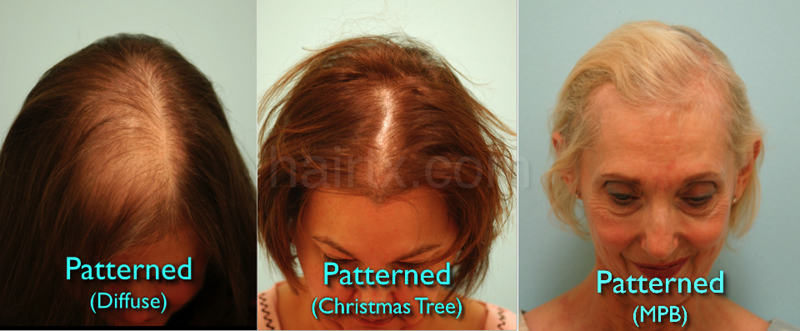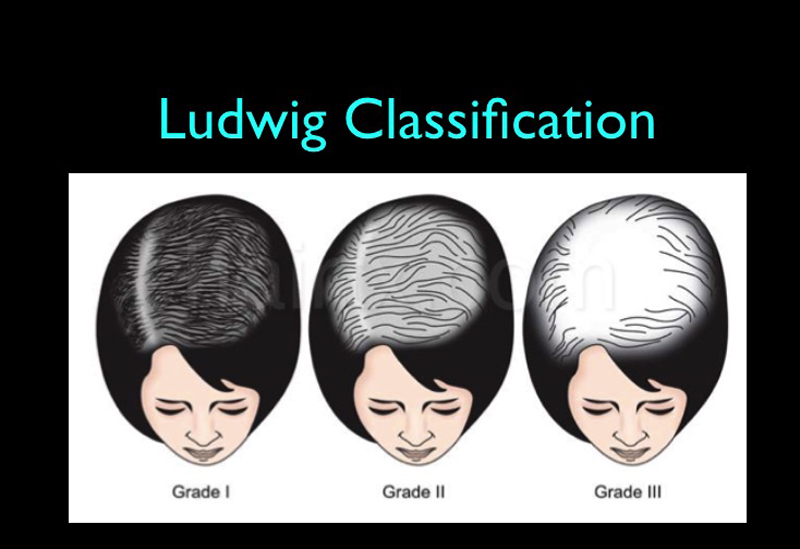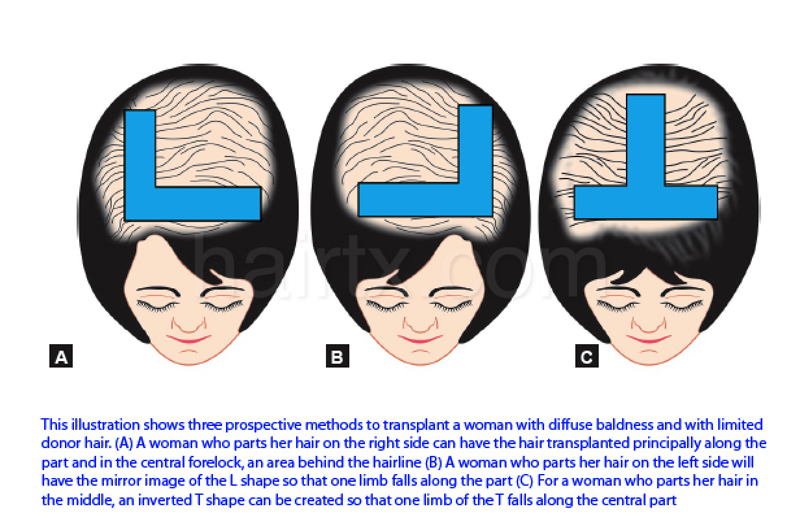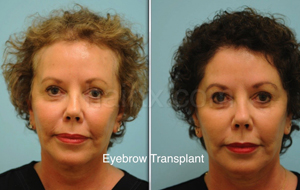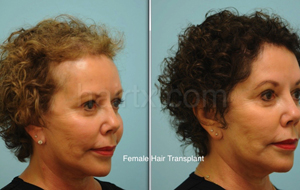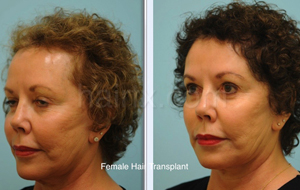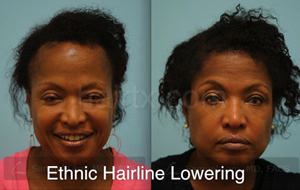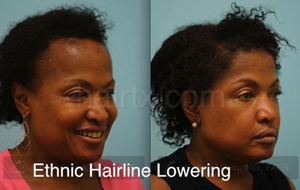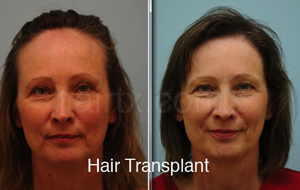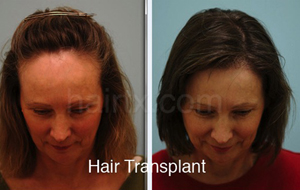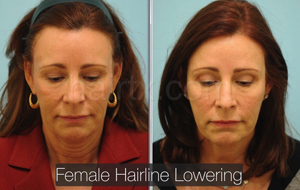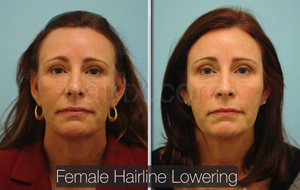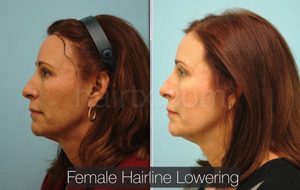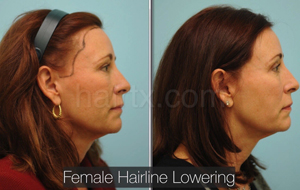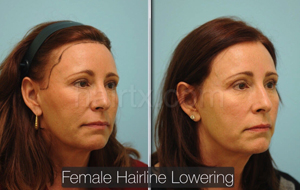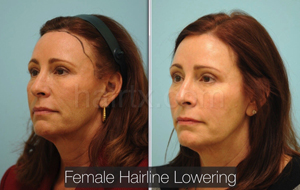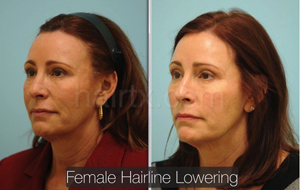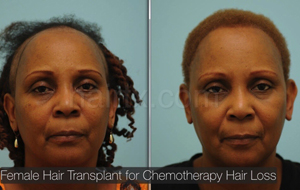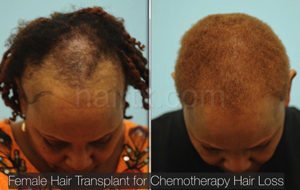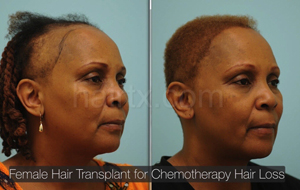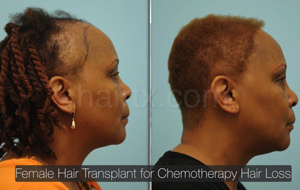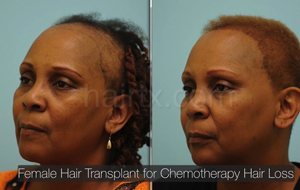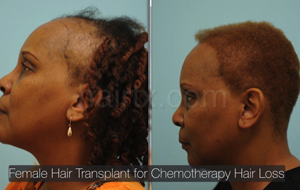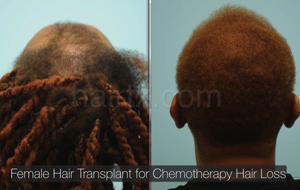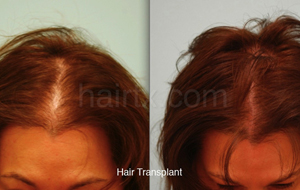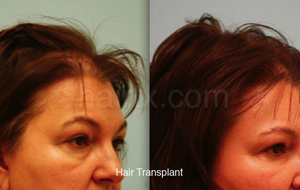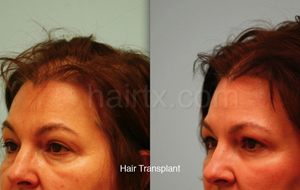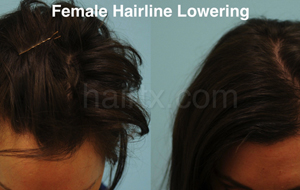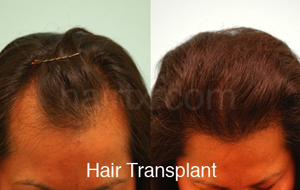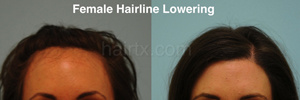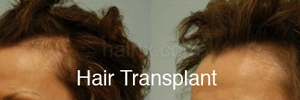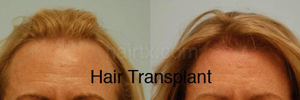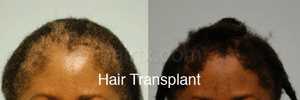Female Hair Transplantation
Although the public typically thinks of hair transplant as a primarily male-targeted procedure, Dr. Lam regularly performs hair transplants in women for a variety of reasons. About 30% of women over 30 years of age experience hair thinning, so hair transplant is a very common procedure that improves hair density and provides a solution for female hair loss. Hair transplant can also be undertaken to restore the hairline in women who have either lost the frontal hairline due to anaginghair loss or simply were born with a very high hairline. Finally, in some situations, a hair transplant is the only solution suitable for women who have undergone prior surgical rejuvenation procedures like face lifting and/or brow lifting and lack hair due to exposed scars in the temples and, sideburns, behind the ears, or elsewhere.
Contact Us Today! Read Our Manifesto Visit Our Gallery
The low-positioned (compared with men) and rounded female hairline frames the female face and adds youth, beauty, and femininity to a woman’s face. When restoring the female hairline, it is important not only to create a suitable shape but also to precisely recreate all of the details of a female hairline. A female hairline may be rounder, more oval, rectangular (still with softened corners), or some intermediate between these shapes.

This is a 29-year-old patient who is shown after a single session hair transplant.
The “micro” aspect of the female hairline has unique subtleties that exhibit a completely different structure from the male hairline. The hairs rotate from a point centered typically just off of the midline on one side and cascade obliquely down the temple area. To learn more, watch the videos on female hairline design for more information on this website.
As mentioned, many women lose hair and have thinning hair as they age. Though female hair loss may be genetic, there are many medical conditions that either preclude surgery or make surgery unnecessary or unsafe. Accordingly, before surgery is contemplated, it is important to evaluate a woman very thoroughly for the possible need for additional medical evaluation. If the hair loss is unstable, for instance, the hair is being actively shed, then surgery is not usually the right answer. An investigation into the dermatologic and/or hormonal circumstances may be a good first step in many cases. A low iron level, recent pregnancy, or low thyroid may be causative agents, and Dr. Lam may refer you to a proper consulting physician before proceeding with surgery. However, in many cases, he may elect to schedule surgery if he believes that these medical therapies could be undertaken simultaneously with surgery and would only enhance the surgical result rather than preclude it. For a detailed podcast on Dr. Lam’s current philosophy of how he approaches female hair loss evaluation from a medical perspective, please click the following link on Female Hair Loss Evaluation
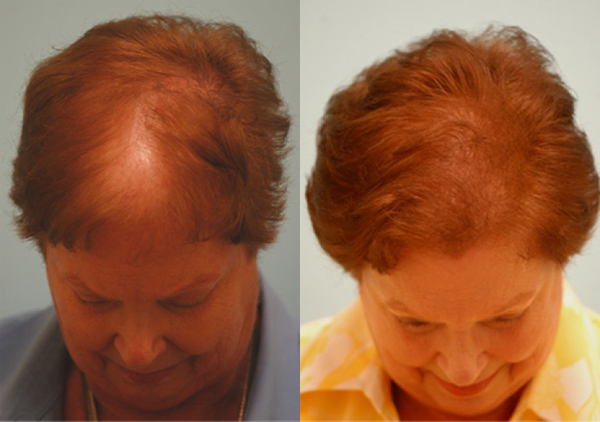
This patient shows a classical “Christmas tree” pattern of hair loss with a greater degree of hair loss in the front of the scalp tapering to less loss toward the back of the scalp. She underwent a hair transplant to restore the lost hair density.
Besides demonstrating the artistry in female hair restoration and proper judgment on whether or when to do a procedure, a surgeon must also demonstrate creativity in managing donor and recipient areas. In women, it is not uncommon to see hair thinning that extends into the donor area, which limits the amount of available hair for hair transplant and consequently can affect the results. For example, if the size of the thinned-out hair area needing transplant exceeds the size and density of the donor area, then Dr. Lam may design a transplant pattern that would strategically enhance results and provide more effective hairstyling options. An illustration taken from Dr. Lam’s textbook, Hair Transplant 360, Volume 1, some various designs based on these constraints.
As shown in the illustration, a woman may undertake a “T” shaped transplant if she has loss principally along the midline of the head and/or is desirous of wearing her hairstyle parted in the middle. Alternatively, if she parts her hair on the left side, then the hair loss exposed with that kind of hair part can be covered ideally with an “L” shaped design where the long limb of the L follows the hair part. These are just some examples of designing hair transplants for various hair-loss conditions in women. Of course, there are many subtle variations based on a particular woman’s needs, wants, and available donor hair.
Women will almost completely bald like men, but they still can lose substantial hair density with aging. Sometimes women do not lose as much hair as they undergo a thinning of the hair shaft itself. This process makes the hair look much thinner and the bald scalp more visible even though the number of hair shafts may not be greatly diminished. At other times, women undergo both a thinning of the hair shaft and a total reduction in the number of hair shafts. This combined type of hair loss is the most common scenario and poses greater difficulty for surgical hair restoration. The success of the result owes in large part to the thickness and density of the donor’s hair as well as other factors like hair curl, color/contrast ratio of hair to scalp, etc. Consequently, hair medical therapies, are oftentimes a vital component of the overall strategy for helping a woman with thin hair and in some cases may be the only viable option when surgical hair transplant is unwarranted, unsafe, or otherwise not desired. Dr. Lam recommends several treatments, oftentimes designing a most effective combination that would address each woman’s unique situation.
Minoxidil, also known commonly by the brand name Rogaine, has been a very successful treatment in many women with hair loss. Some women, however, start and stop the usage of minoxidil for a variety of reasons. One reason is that they do not have realistic expectations for what minoxidil can accomplish. For example, minoxidil by itself may not entirely restore the density but thicken the current hair, further slow down the balding process, and overall improve one’s condition. Moreover, during the initial application of minoxidil, some women may experience temporary shedding, which can cause them to, unfortunately, stop the treatment. Dr. Lam advises women to commit to minoxidil for a minimum of 4 to 6 months before evaluating its effectiveness. When preparing for surgery, he advises women to be on at least 6 weeks of minoxidil before surgery in order to “stabilize” hairs that would otherwise have a greater chance of temporarily shedding, known as “telogen effluvium”. Hairs that are “weak and unstable” are more likely to be affected by the scalp manipulation that happens during a hair transplant, as many women are prone to shed hairs around a transplant following a surgical procedure. Although this type of hair shedding is limited, it can be disconcerting to women and can be minimized with proper preoperative medical therapy.
Recent evidence supports that in many cases of female hair loss, the underlying condition is inflammatory in nature, i.e., the scalp shows signs of subtle inflammation. Accordingly, a short 3-month period of topical steroid with minoxidil may be helpful (but not always) to reverse or slow down this inflammatory process. Science is always advancing and Dr. Lam stays current with all medical knowledge and research regarding hair loss and hair transplants. Therefore, he may adapt and tailor this information to you as is clinically justified.
Low-Level Laser Therapy (LLLT) – One of the major advances in hair-loss treatments is home-based therapy for hair loss using low-level laser therapy (LLLT). LLLT has been used for quite a while but the accessibility to the treatment was difficult. In the past, a person was required to make multiple weekly visits to a physician for such treatments making compliance with the treatment near impossible. Recent advances have allowed far superior home technology that is easy to use that can be very beneficial for women and men who are losing hair and can either supplement minoxidil or serve as a standalone method of treatment. Please see the section on LLLT for more detailed information regarding this type of treatment.
Scalp Micropigmentation(SMP) refers to the use of a medical tattoo on the scalp in order to camouflage baldness. It can be very helpful for women who do not want to undertake a hair transplant or it can be used subtly to improve a hair-transplant result. The procedure is quick and easy, and it creates immediate results by decreasing color contrast between the scalp and hair color. Scalp micro pigmentation is especially effective for women who color their hair.
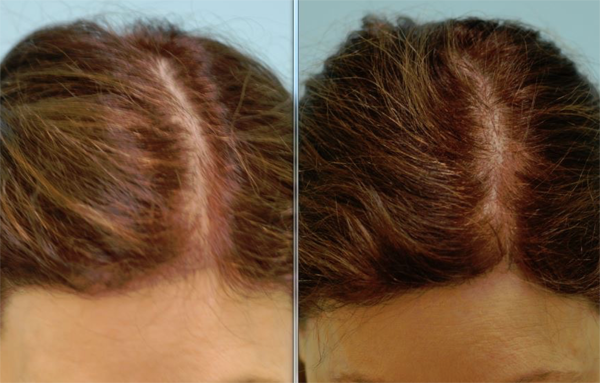
This patient underwent scalp micro pigmentation (also known as medical tattooing) to create the illusion of greater visual density, an option available with surgery or without surgery.
This woman underwent a hair transplant and had her hair part further enhanced with SMP to add density and less scalp show.
Platelet-rich plasma (PRP) and ACell (acellular porcine bladder matrix) are very helpful in every surgical case to improve surgical results. However, at times, some women prefer to have PRP/ACell injected without surgery to improve hair-loss conditions as a standalone office procedure. For details on these types of treatments, please see the related PRP section.
Almost half of the cases that Dallas hair transplant surgeon Dr. Sam Lam performs is in women. He performs both female hairline lowering through advancement and transplant along with restoring lost hairs in the scalp and eyebrows. He truly understands female hair loss and can plan the most effective strategy for your hair loss needs. All hair transplants and surgeries are performed painlessly in his state-of-the-art Joint Commission accredited surgical facility in Plano, Texas, just north of Dallas.
Key Points
- Ideal candidate
- Women born with a high hairline and feel their forehead is “too big”
- Women who have been progressively thinning and are diagnosed with female-pattern hair loss (and who have sufficient donor hair to undergo hair restoration)
- Women who are experiencing an aging hairline (receding corners)
- Transgendered individuals (male transitioning into female [MTF]) who are on hair-loss management or hormone therapy
- What to do
- Schedule your procedure and plan on one week for recovery during which time you are functional but may not be socially presentable for 3 to 5 days due to possible swelling around the eyelid area.
- If you are not on any hair-loss management therapy, you may be asked to start one or several (such as minoxidil and/or laser) in preparation for the procedure. Depending on your unique situation, you may be required to be on a hair-loss management treatment for a minimum of 4 to 6 weeks (or longer) to strengthen your hair and minimize postoperative, temporary hair shock loss.
- If you are from out of town, you will be required to arrive the day before the procedure and will be allowed to travel the day after, staying in town for a total of two nights. However, if you are not in town at for weeks after the procedure, you will need a professional to remove your sutures (stitches). Dr. Lam has many colleagues across the United States and the world who may be able to help remove your sutures so that you do not need to stay in Dallas for two weeks or return in two weeks to have your sutures removed.
- What to expect
- You may have visible scabs around the transplanted hairs and swelling of your forehead and around the eyes that may last 3 to 5 days.
- You can wear a hat and sunglasses immediately after the procedure, and you can wash your hair 24 hours afterward and resume most physical activities 48 hours after. You can travel the next day.
- You can wear a wig or camouflaging products 7 days afterward and color your hair 15 days after the procedure. Your stitches should be removed 2 weeks post-procedure, and we will help you schedule your appointment.
- You may experience postoperative shock loss that may arise 4 to 6 weeks after a procedure. If this occurs, the hair shedding is temporary and represents weak hairs being pushed into a dormant phase, which should regrow around the same time as your transplanted hairs. If this happens, using SL MAX fibers (which we have available) that are color matched to your hair can camouflage the hair loss until the hair is regrown. (In very rare cases, you may need a temporary wig to manage the situation.)
- Transplanted hair should start growing 3 to 4 months post-procedure (but may take longer for substantial growth to be visible) and should improve in growth up to 12 months post-procedure (or slightly longer than this period of time).
How Much Does Hair Transplantation Cost?
The cost of a Hair Transplantation will depend on several factors. The price can be affected by body type, type of technique performed, surgical complications, and even allergies. Find out more by scheduling a consultation.
Schedule a Consultation
Explore your hair-loss treatment options with hair restoration in Plano Tx. Call Lam Institute for Hair Restoration today to arrange a consultation with your skincare expert regarding your hair-thinning problems.
FAQs
-
What are some basic principles for female hairline design that you use?Female hairlines are completely different from male hairlines. Female hairlines come in many varieties, shapes, and contours. However, some basic tenets should be applied. First, the hairline should be rounded downward at front temporal oral corners unlike for men. Second, the hairline is relatively straighter and has fewer “sentinel” hairs that protrude out from the hairline compared with men. Third, the hairline has a rotating sweep, known as a cowlick that oftentimes starts on one side of the part and rotates around toward the other side. Fourth, there can be “lateral mounds”, which are small protrusions of the hairline in the outer portion of the hairline numbering 2 to 4 typically. Dr. Lam has filmed numerous female hairline recipient-site design videos (the little slits into which the transplanted hairs are placed) that reveal his artistry and strategy for his design. Unlike anyone else in the industry, he reveals in-depth the artistry of his design to show you how he can achieve consistently excellent, artistic results.
-
Does Dr. Lam perform surgical female hairline advancement?
Yes, Dr. Lam performs an alternative to female hair transplant for advancement of the female hairline. This technique involves making an incision across the hairline and pulling the scalp forward to advance the hairline. The candidates for this procedure would be women who have a mobile scalp (that Dr. Lam can determine by physical examination), who have relatively little temporal hair loss, and those who have a strong existing hairline. The benefit of this procedure is that it provides immediate results rather than having to wait a few months for the hairs to grow in. The negatives of this technique are summarized as follows: 1) it fails to address the temporal hair (which is oftentimes a large part of the hairline restoration that is necessary) 2) there is a slightly visible scar that may benefit from additional hair-transplant grafts to soften it 3) there is a prolonged period of time where the scalp feels very numb upwards of one year or longer 4) it does not permit any artistic reshaping of the hairline since the existing hairs must be moved forward and 5) if the hairline is weak or if there is any loss in hair density, this procedure will not work. Due to these numerous shortcomings, the majority of cases Dr. Lam performs for female hairline lowering are undertaken using the hair transplant method. However, Dr. Lam can discuss with you in person the pros and cons of hair-transplant surgery versus hairline-advancement surgery.
What are some of the basic principles of female hair restoration for thin hair?
There are in general three types of hair-loss patterns for women: 1) a general diffuse hair loss 2) a Christmas-tree pattern and 3) male-pattern baldness (or fronto-temporal recession). These three types of hair loss come in three levels of severity: Ludwig Grades I, II, and III. Based on the type of hair loss, the severity of the hair loss, and the amount of donor hair available, Dr. Lam must determine the best pattern of design that will achieve a favorable cosmetic outcome. Many times women have too much hair loss and too fine and sparse a donor hair to be able to transplant the entire head evenly and uniformly. Instead, a strategy must be devised to create the most hair density for a woman in a single hair-transplant session and with the donor hair available. Dr. Lam has written in his textbook about his three principal methods for hair restoration in women with poor density: an L, a reverse-L, and a T-shape. The shorter limb of the L and T describes the central forelock and hairline that are usually affected and are of high priority. The longer limb of the L or T then describes a favored parting of the hair. Although it would be ideal to permit a woman to part her hair in all different styles, that may not be possible in which case Dr. Lam advocates to perform a targeted solution by choosing one parting style and sticking with it.
-
Does Dr. Lam perform FUE for female patients?There are two principal methods for hair restoration: FUE (removing one hair grouping at a time) and FUT (strip method). Dr. Lam believes in the majority of cases FUT is the preferred method for restoring female hair loss for a variety of reasons. First, FUE requires shaving the head, which doesn’t really make sense for women who have longer hairstyles. Even to harvest a small number of grafts, a large area on the back of the head needs to be shaved and doing so would cause women to suffer from having a bald patch for several months. There simply is no reason for it. (By the way, the no-shave FUE method really limits the number of hairs attainable and again makes very little sense for women.) Second, FUE grafts survive less than FUT grafts, so again there is absolutely no reason to have a less than ideal outcome for women. Third, FUE can depopulate the donor area and make the back of the head appear thinner, especially because women already oftentimes have thinner hair in the donor area. Conversely, FUT harvests a small strip where the density of the back of the head is the highest and thereby not typically affecting the density in the donor area nor hairstyling. Fifth, women do not wear their hairstyles super short so a 1 or 2 mm scar (in a worst-case scenario) should not be an issue in terms of visibility for most women. For all of these reasons, Dr. Lam believes that FUE makes no sense in the majority of women who come to him for hair restoration. There is always an exception, but Dr. Lam believes that the majority of FUE performed in women have been undertaken simply for marketing purposes and are not a wise choice for women.
-
Can I stop wearing my wig after my hair transplant?A wig can offer unprecedented hair density for a woman that hair transplant may be unable to match. If a woman is realistic about the outcomes and understands Dr. Lam’s strategy (explained above), then oftentimes she no longer needs to wear a wig. Less often for women with very poor hair density, they may continue to need to wear a wig but the hair transplant can be performed in the front hairline for the most natural outcomes and then have the wig support the transplanted hairline from behind it. After a consultation with Dr. Lam, he can discuss with you the applicability of this strategy to your particular situation.
-
Can I stop taking medications for my hair loss after my hair transplant?Hair loss can be a progressive disease. If you are experiencing long-term, chronic hair loss, then it may be wise to continue some kind of medical therapy for women, including minoxidil (Rogaine), hormonal therapies, herbal therapies, low-level laser therapy, PRP injections, etc., to minimize progression. Dr. Lam can consult with you about the pros and cons of each medical therapy to help guide you on what would be ideal in your situation. It is worth reviewing the section on female metabolic evaluation for more details about how hormones can influence female hair loss and what laboratories and hormonal replacement may be beneficial.
-
Does Dr. Lam perform female feminization surgery (FFS) for transgendered patients?Although Dr. Lam performs hair transplants for Male-to-Female (MTF) transgender patients, he does not perform FFS. He has several colleagues to whom he can refer you for this procedure, but he does not perform it. Another common question is should one undergo FFS before or after hair transplant. There is no simple answer for this question. In general, it may be ideal to undergo FFS first and then have the hair transplant surgery 10 to 12 months afterward to restore hair. Alternatively, due to the expense of FFS, some MTF patients decide to do hair transplant first deferring FFS to a later date. Dr. Lam can discuss with you the pros and cons of each method as you decide what would be the right choice for you.
 Lam Institute For Hair Restoration
Lam Institute For Hair RestorationRelated Blogs

Hair Transplant Dallas
When people think of a hair loss they typically think of men, however, many women also experience hair loss. When women experience hair loss, it is often traumatic and hits their self-confidence hard. Many women pride themselves on their hair. Dr. Lam understands the delicate landscape of female hair loss and restoration. He has helped many… Read More

Before and After Hair Restoration Photos
One of the biggest tools you can use when considering hair restoration options is looking at before and after photos patients who had similar hair loss issues to see what procedure that patient had performed. Looking at Before and After Hair Restoration Photos can also help give you a move realistic idea of the results possible. It… Read More
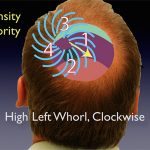
Crown Hair Transplant Strategies: New Thinking in the Past Two Years
There is not a day that goes by without my thinking or rethinking or innovating something. I am very passionate about making everything better and even when I think I can’t make it better I try to think how I could be wrong. Everything from the patient experience to the patient outcome is integral to… Read More
Related Procedures
- Ethnic Hair Restoration
- Corrective Hair Transplants
- Facial Hair Restoration
- MTF Transgender Hair Transplant
- Body Hair Transplant
Videos
Photos
For more Female Hair Transplantation Before & After Photos, Click here
Please watch Dr. Lam’s SlideShare presentation on female hair loss and hair transplantation.
Please watch Dr. Lam’s SlideShare presentation on recipient site design and distribution.

